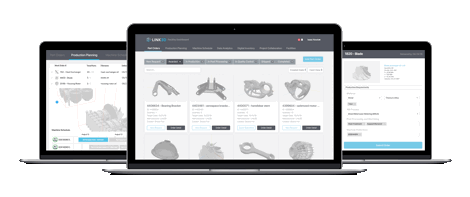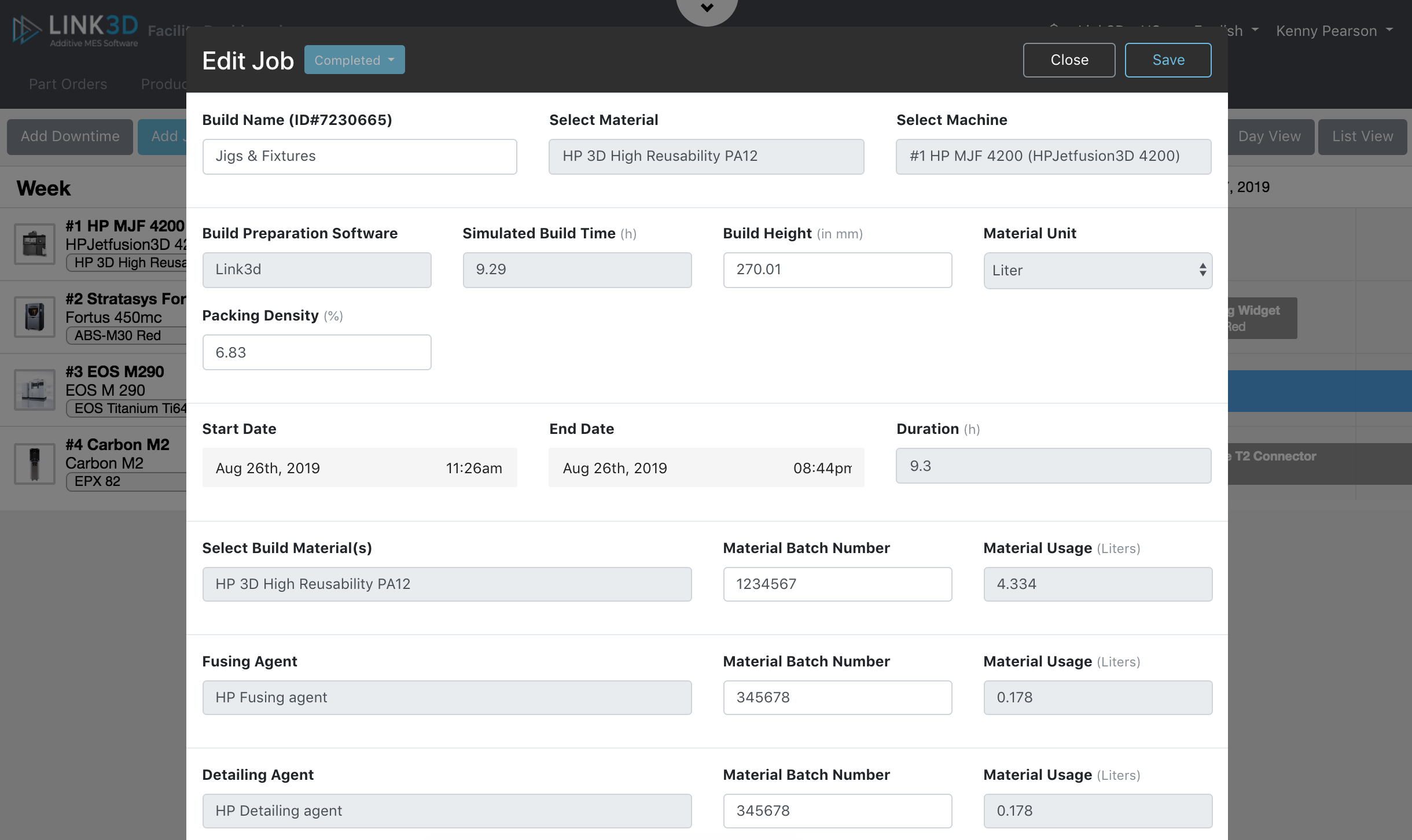Link3D, a New York-based additive manufacturing workflow software company, has announced the launch of a Material Tracking System software module at the Additive Manufacturing Conference in Austin, TX. The new add-on will be integrated into the company’s existing Additive Manufacturing Execution System (MES) workflow Software.
Link3D has designed the Material Tracking System module to enable additive manufacturing traceability throughout the entire production workflow, in order to establish repeatable processes. It allows users to manage material and consumable serial numbers, batches, and order quantities for increased inventory control.
“The goal of this module is to help organizations create better traceability of printed parts in relation to materials used during the run,” states Vishal Singh, CTO & Co-Founder of Link3D.
“Having higher control of material tracking will help create repeatable processes to maximize the return on production. Different modules are interconnected to create a data graph.”

Link3D AMES and Additive Workflow Software
Founded in 2016, Link3D develops and provides software for additive manufacturing OEMs and service bureaus. Its Additive MES Software is used for streamlining internal and external additive manufacturing production, including part ordering, auto-quoting, build time simulation, production planning, post processing management, digital part inventory and data analytics. The company has worked towards continuously updating the Additive MES software with new features, adding a Post Processing Management Technology tool in 2018 and recently an Additive Material Recommendation System module.
Link3D customers can be located across aerospace, automotive, medical and consumer industries. As of December 2018, its AMES and Additive Workflow Software are integrated within EOS North America’s operations.
The Material Tracking System module
Link3D’s Material Tracking System module intends to help organizations reduce material and inventory waste, and potentially maximize production capacity. Businesses are able to record their purchase history across all material and consumable vendors using the module. Companies can then link this data to each 3D printed part in their inventory, providing firms with the ability to track material serial and batch numbers, order quantities and vendor-related information for each component. Each material used in a production run to the printed part can be traced by the module.

The Material Tracking System also obtains material documentation for businesses, such as spec sheets and quality analysis, and can begin materials procurement planning based on the current usage and inventory status. Overall, by tracking material data, Link3D aims to better equip organizations to handle production quality issues caused by expiration, defects and other environmental variables.
“We have worked with many customers that have previously struggled to keep track of their materials. As a result, they have wasted time and capital to handle this manually,” Shane Fox, CEO and Co-Founder of Link3D explains, “There is a need in our industry for inventory control integrated into Additive MES software. Customers can now capture the Digital Twin of each part as they move towards industrializing 3D printing production.”
Subscribe to the 3D Printing Industry newsletter for the latest news in additive manufacturing. You can also stay connected by following us on Twitter and liking us on Facebook.
Looking for a career in additive manufacturing? Visit 3D Printing Jobs for a selection of roles in the industry.
Featured image shows screenshot of the Material Tracking System module. Image via Link3D.


